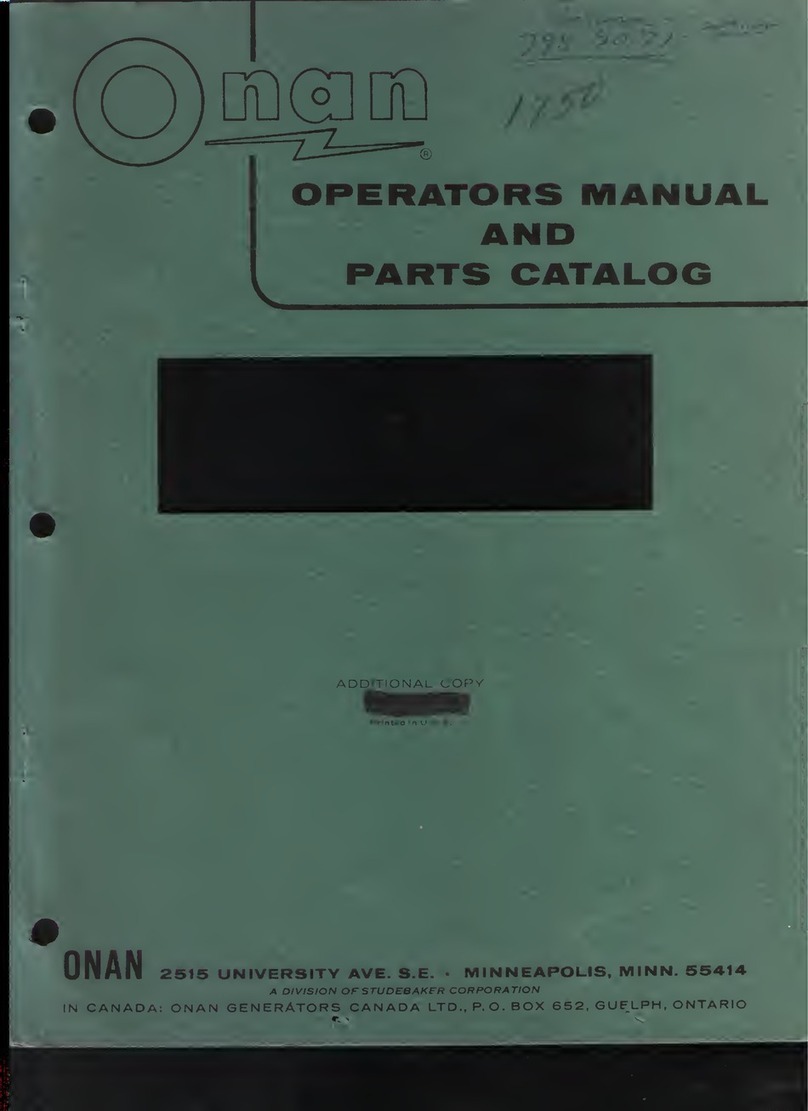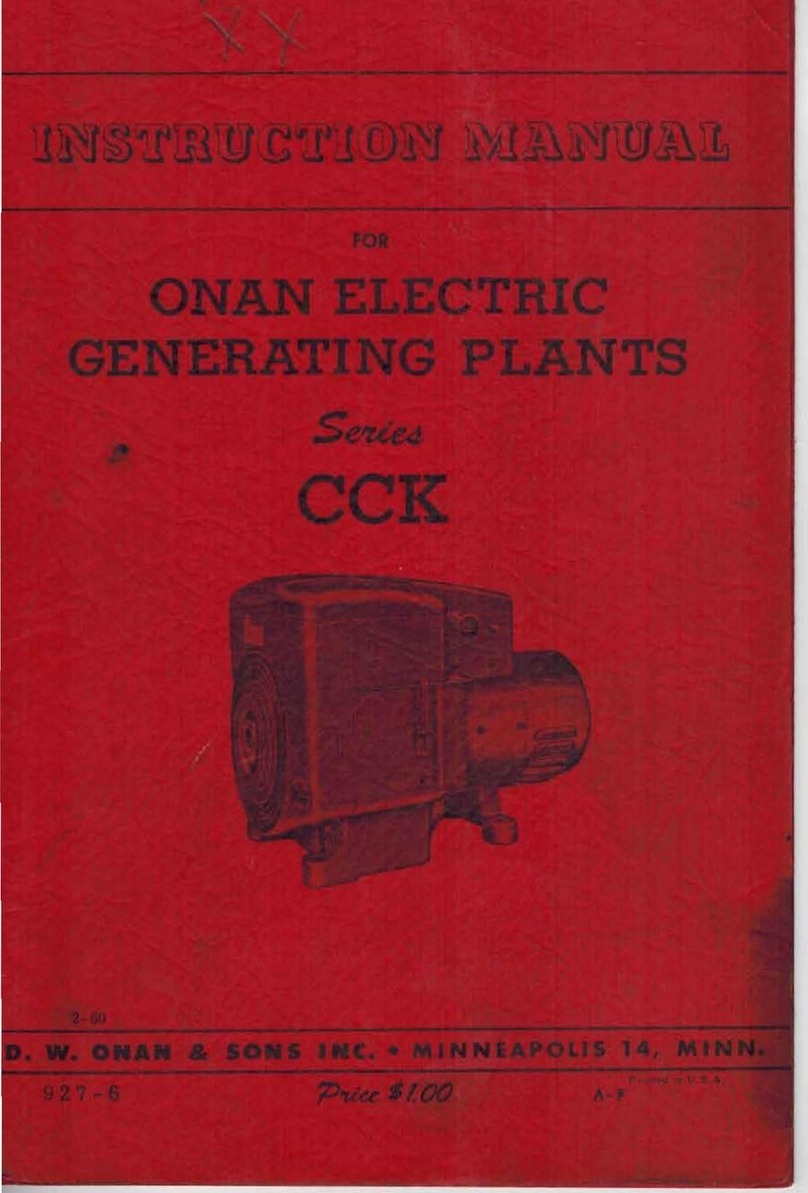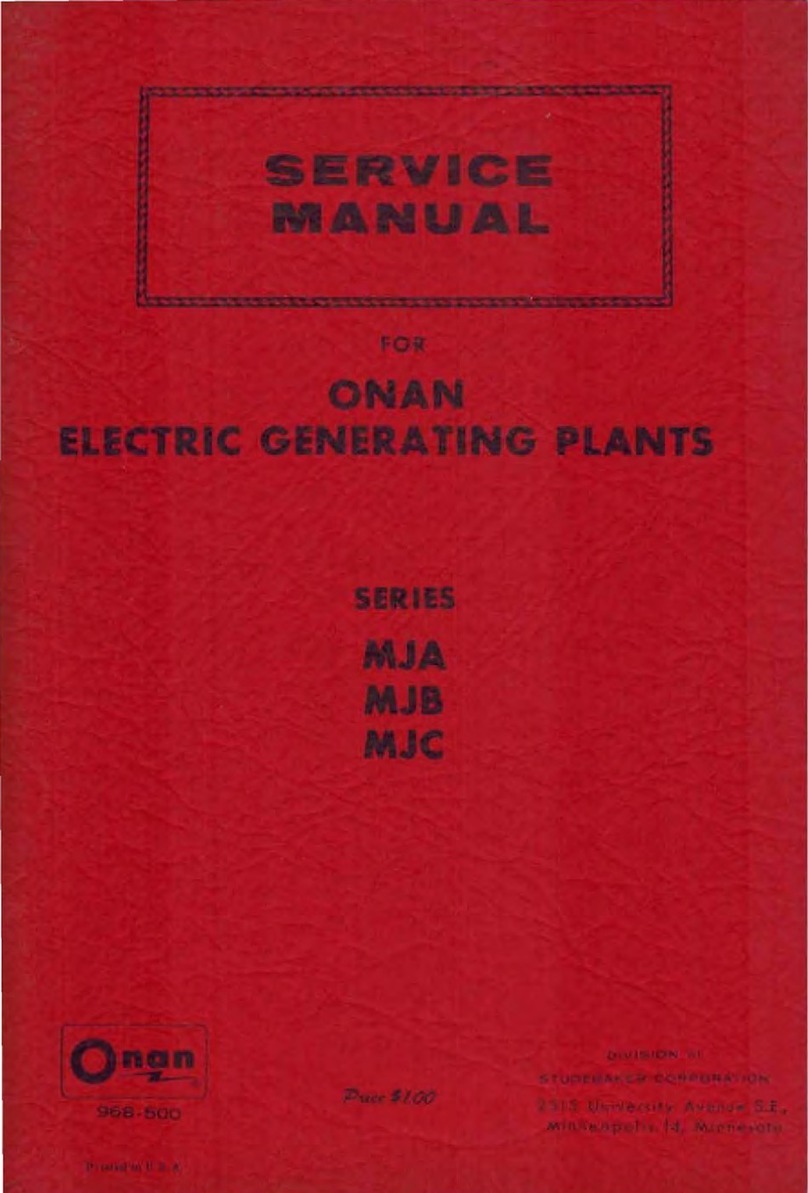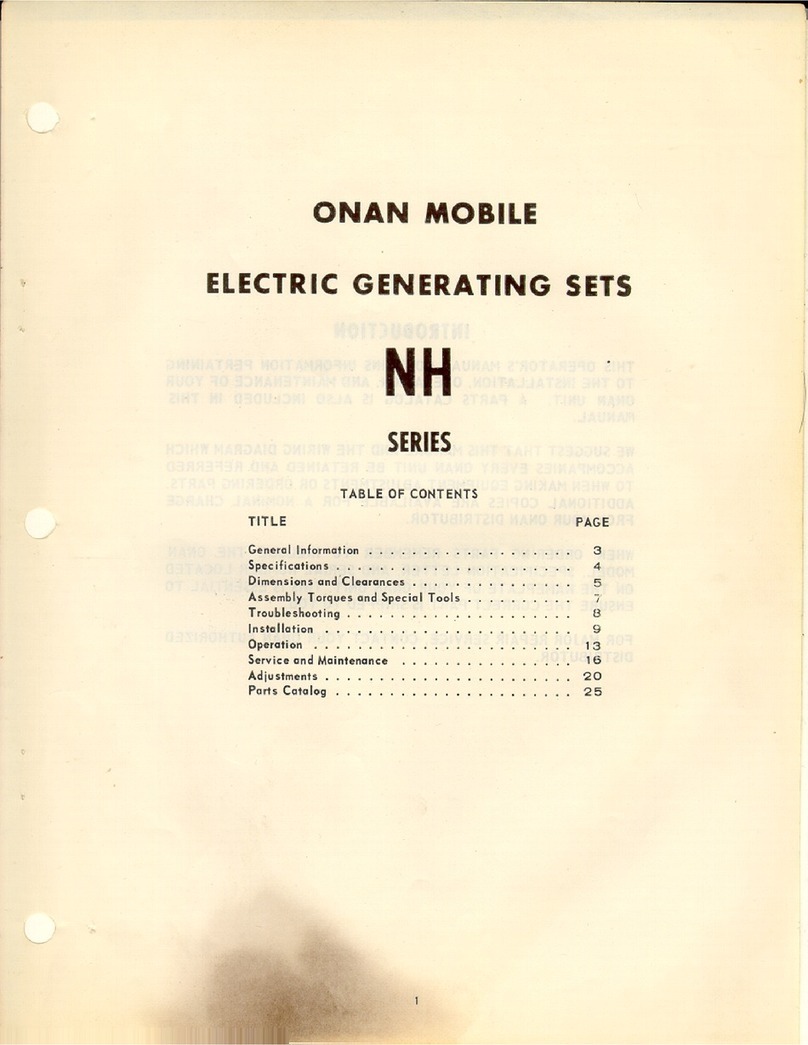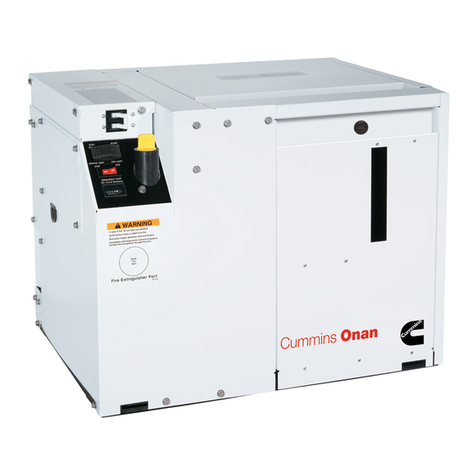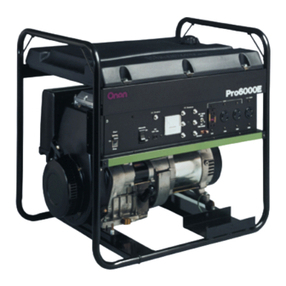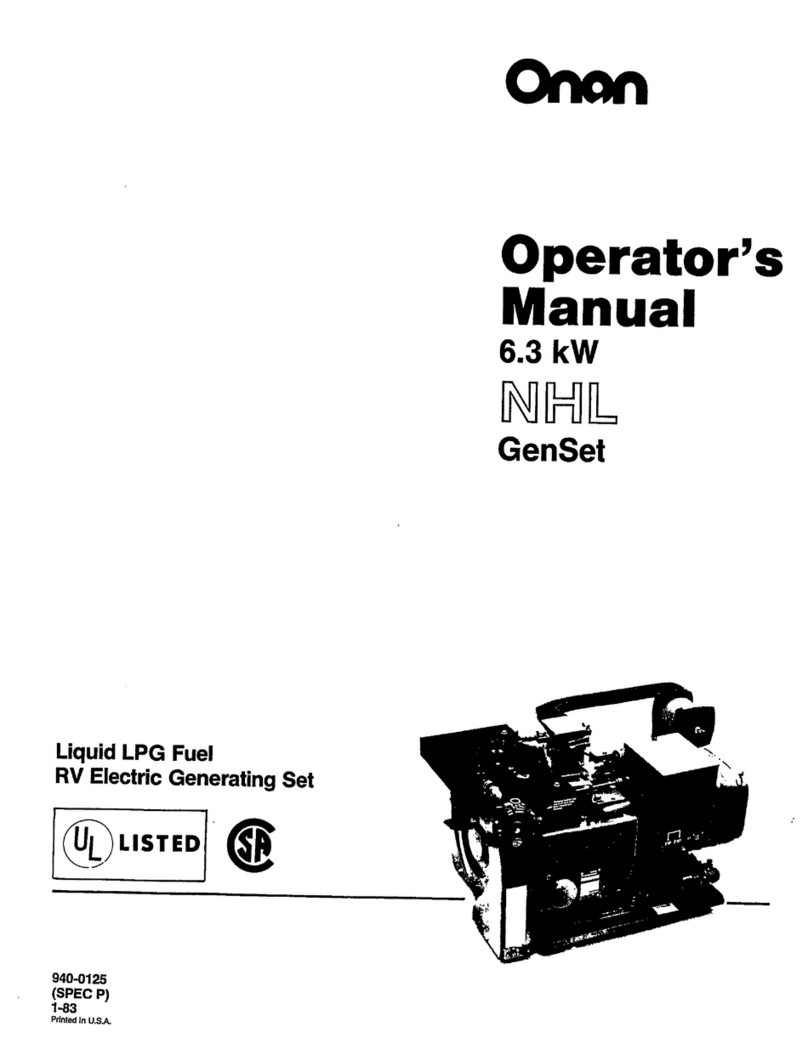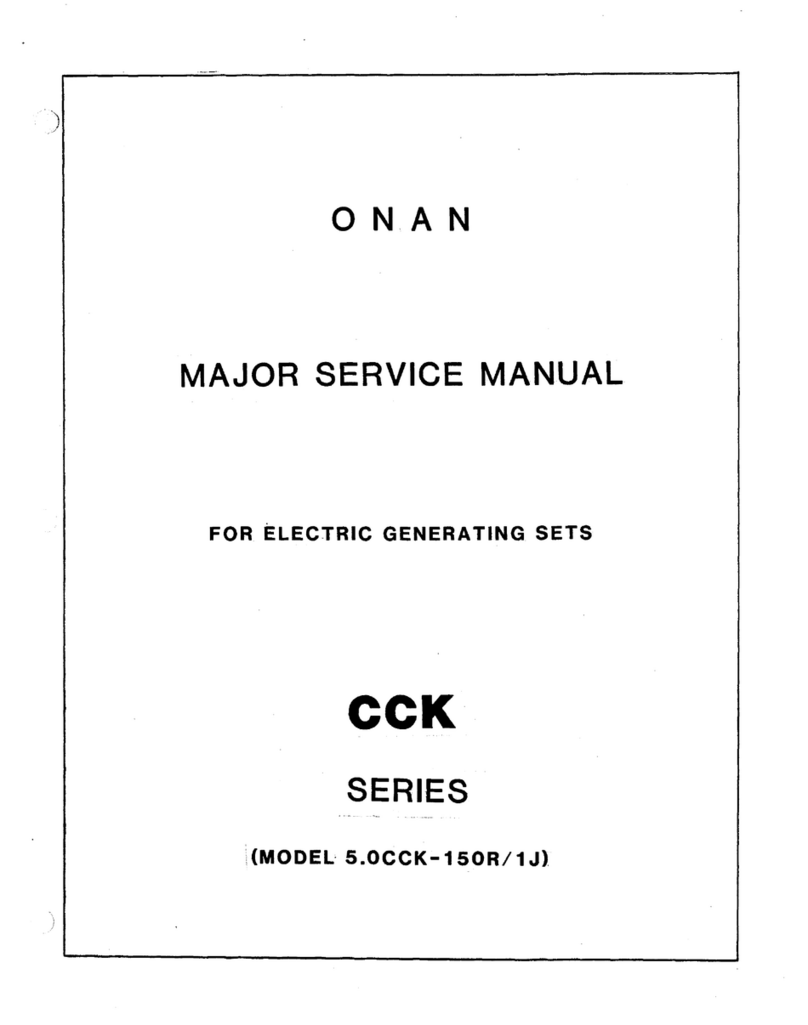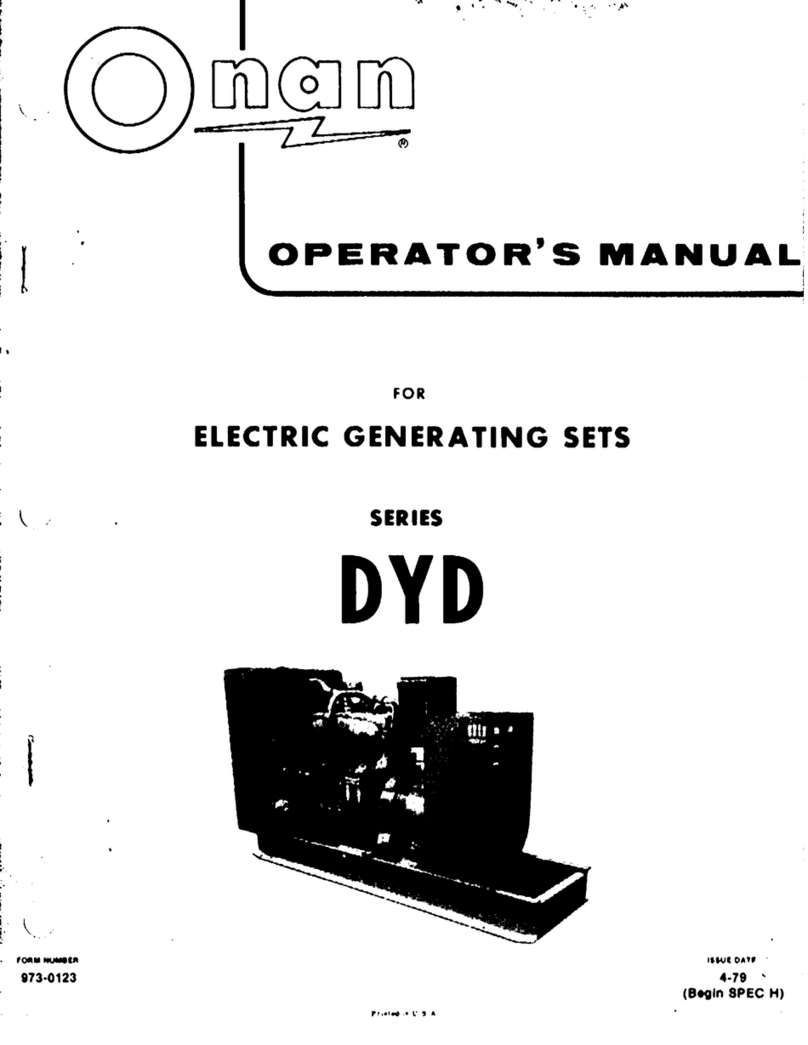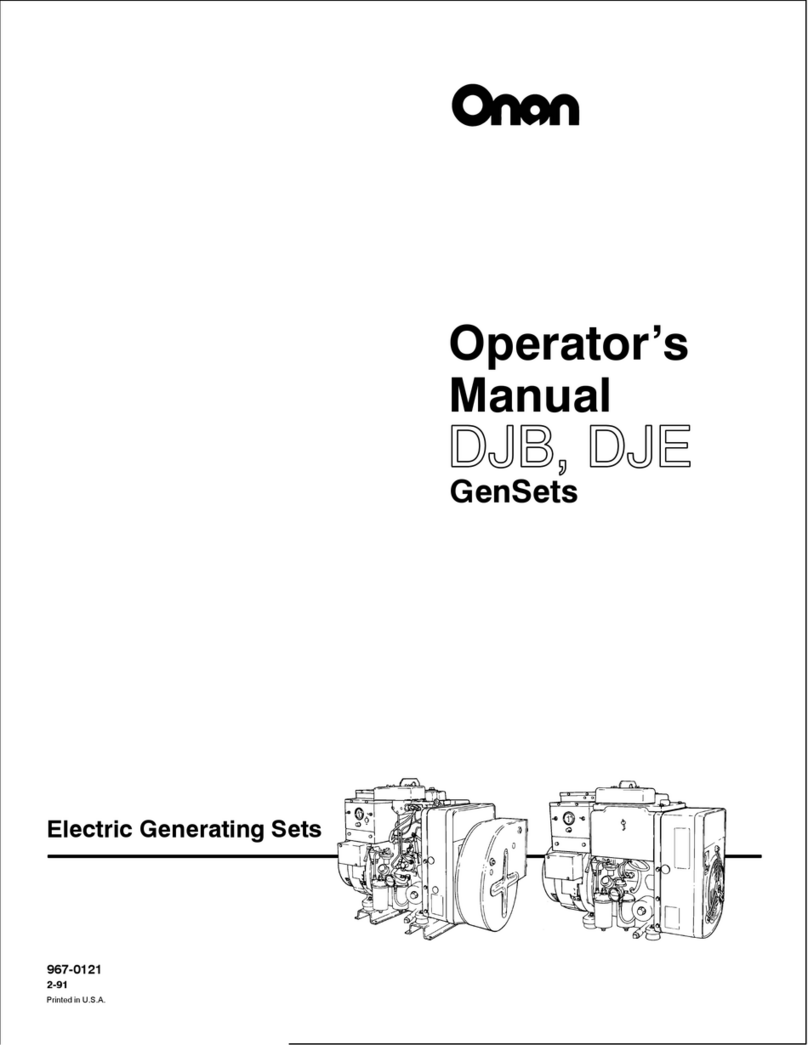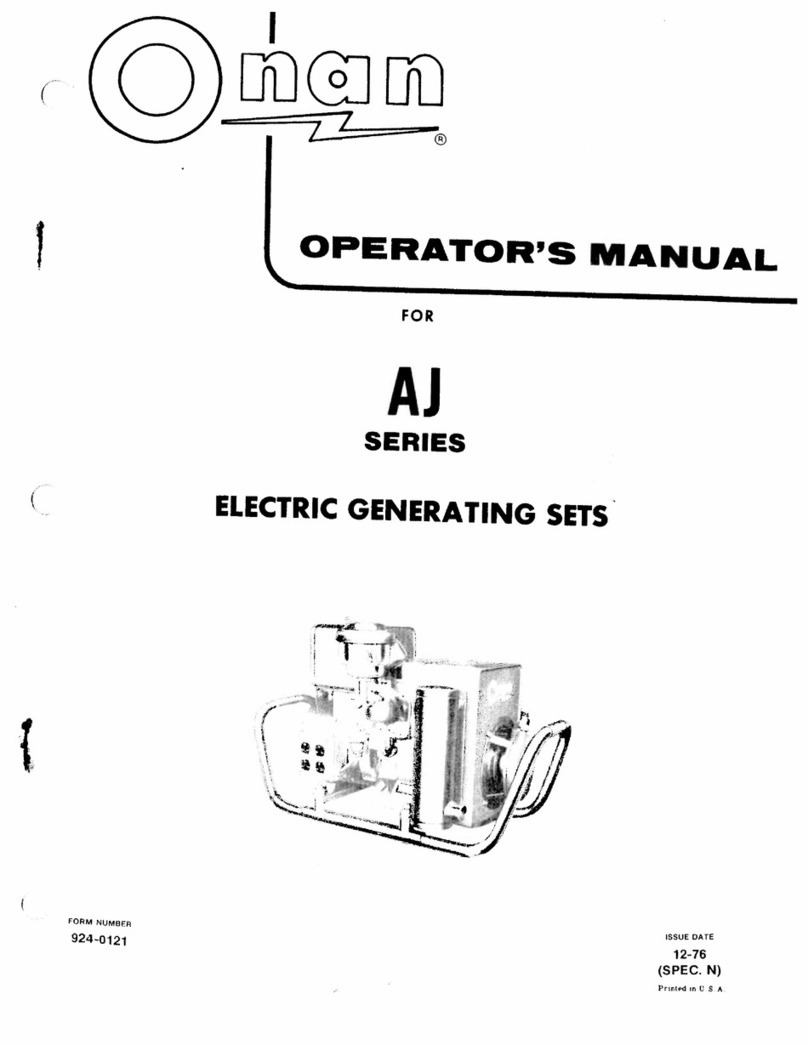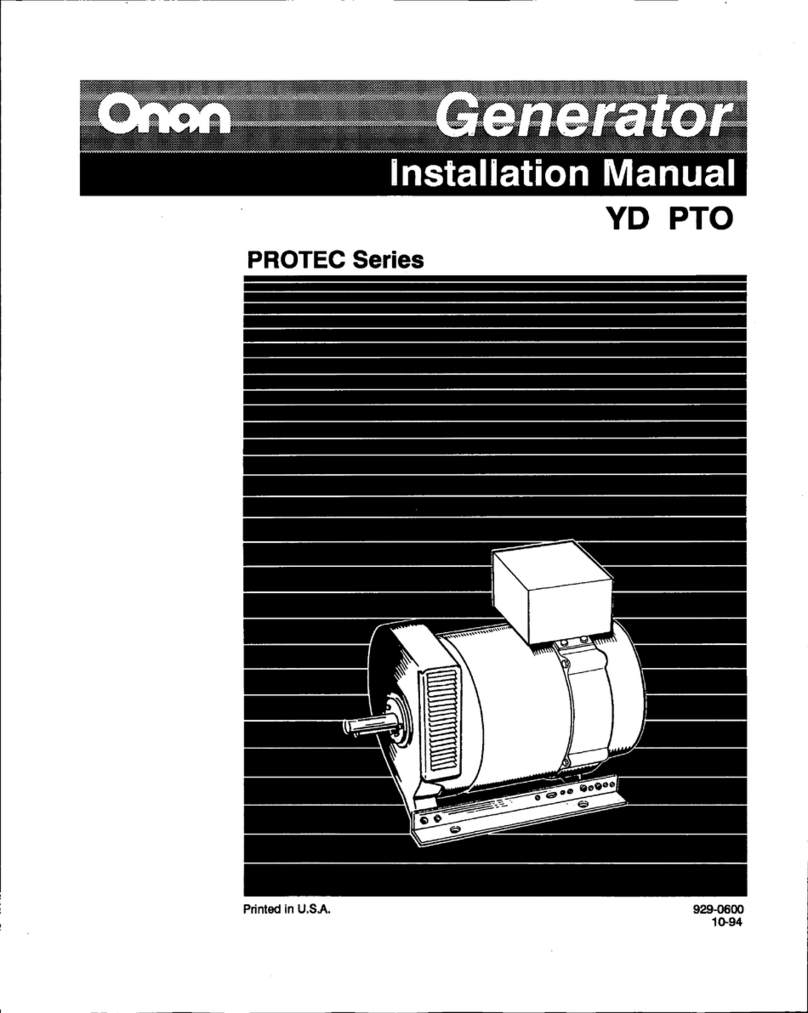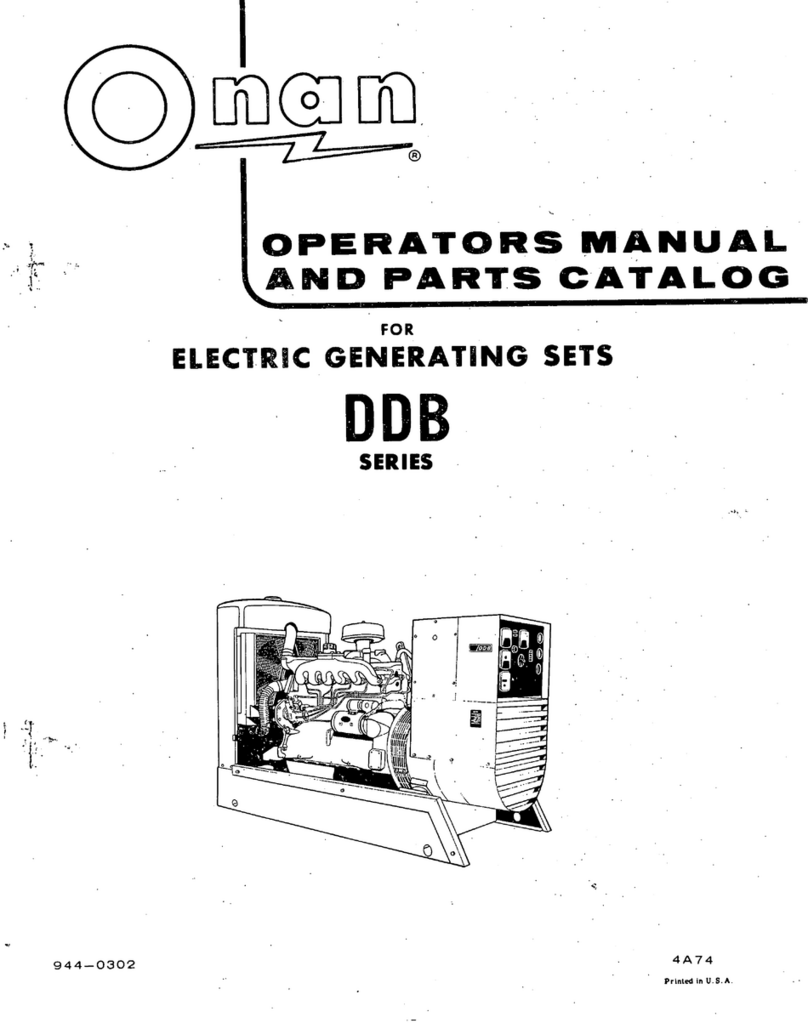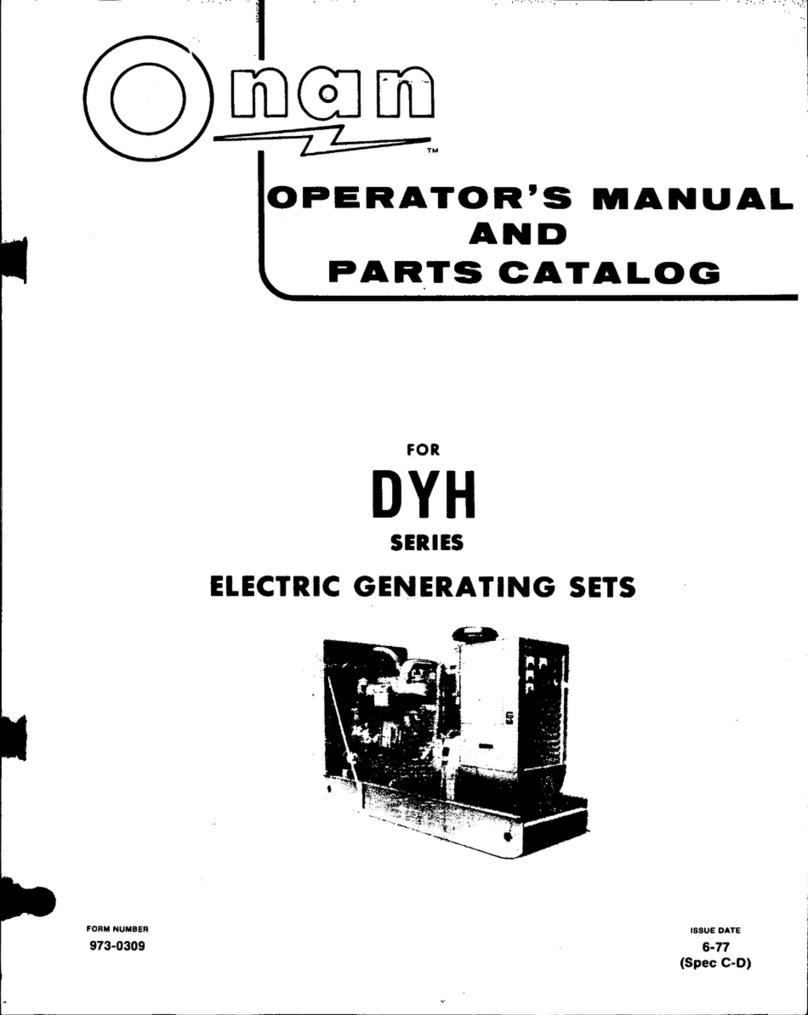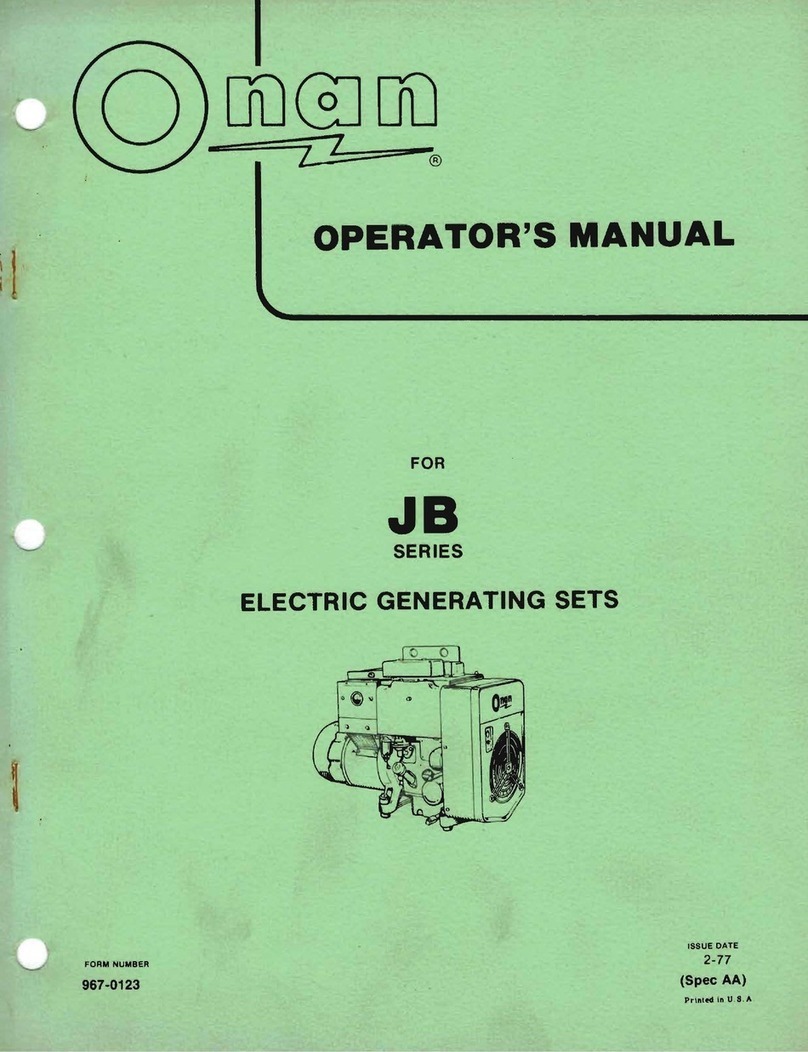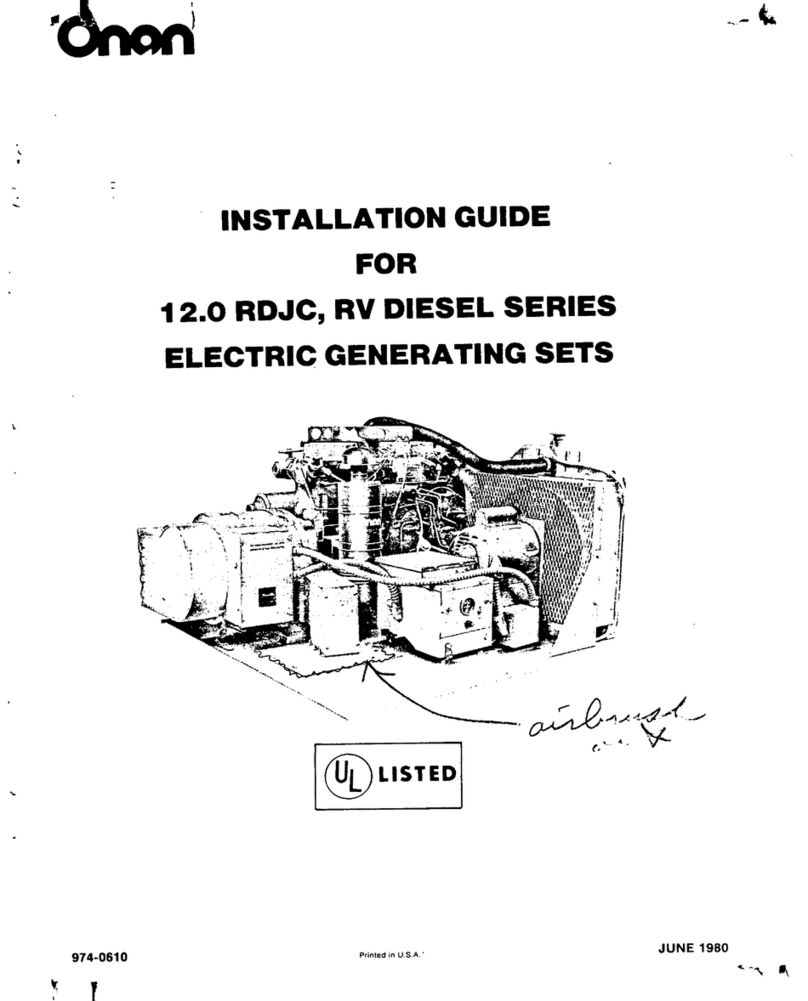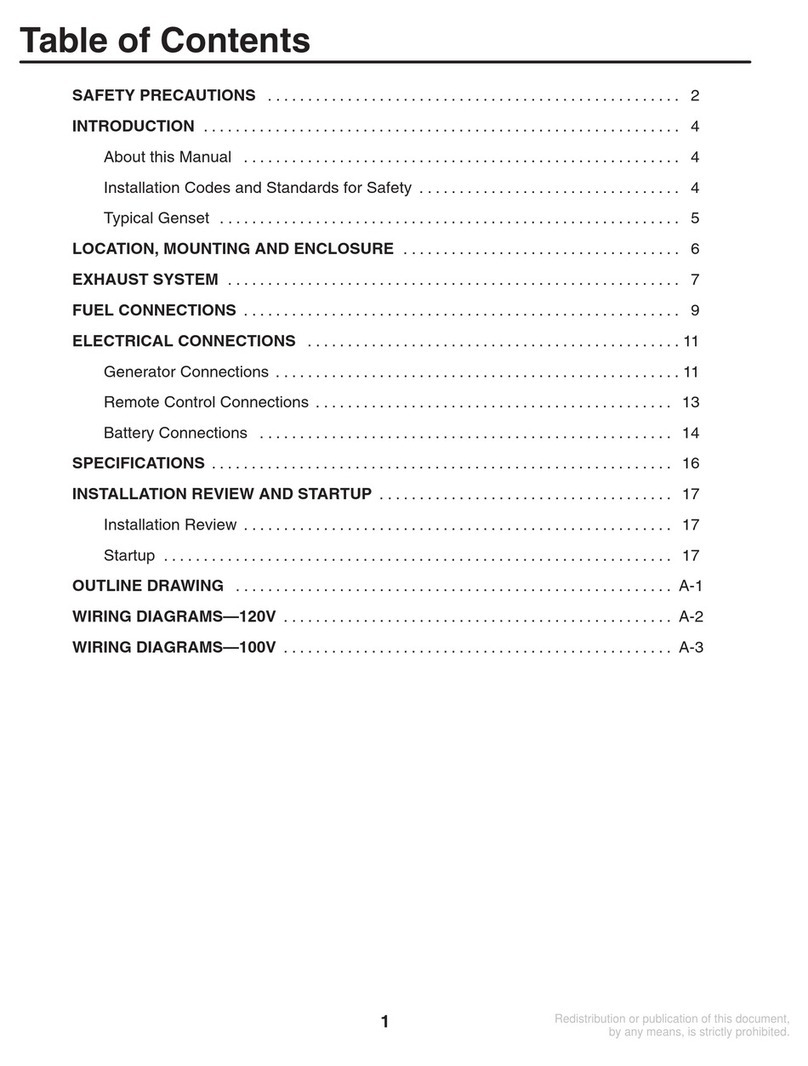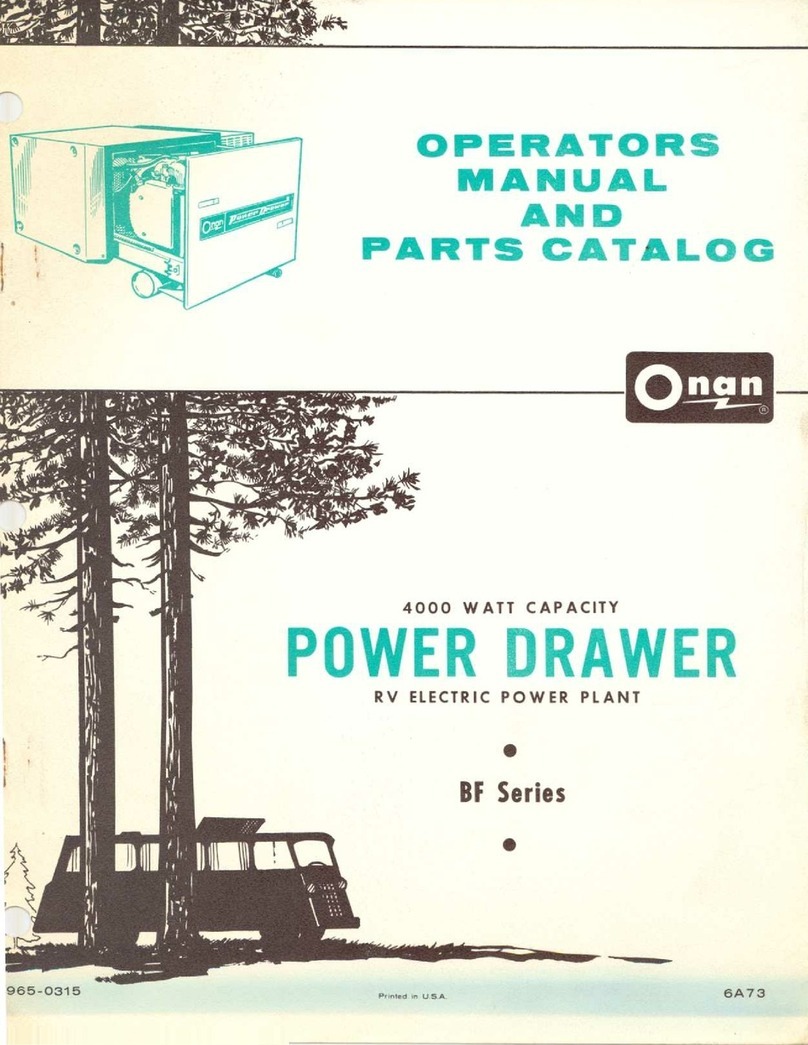Section
2.
Specifications
GENERATOR
Type
................................................
RevolvingField,4-Pole, Self-Excited
Standby Ratings:
60 Hertz, 6.5 MCE
...........................................
6.5
kW, (6.5 kVA
@
1.0
PF)
60 Hertz, 4.5 MCE
...........................................
4.5 kW, (4.5 kVA
@
1.0
PF)
50
Hertz,
5.0
MCE
...........................................
5.0
kW,
(5.0
kVA
@
1.0 PF)
AC VoltageRegulation
.............................................................
+5%
Frequency Regulation
......................................................
.5%
(3 Hertz)
ENGINE
EngineType
............................................
Onan@MCE, 2-Cylinder Opposed
EngineSpeed (r/min)
.........................................................
I800/1500
Exhaust Outlet HoseSize
...............................................
.2.0 in. (50.8 mm)
Fuel..
..............................................................
Unleaded, 88 octane
FuelInletSize..
............................................................
.1/4-18 NPT
FuelConsumption, Average
@
FullLoad:
60 Hertz, 6.5 MCE
....................................................
1.3 gph
(5.0
Lph)
60 Hertz, 4.5 MCE
....................................................
1.6 gph
(6.1
Lph)
50
Hertz,
5.0
MCE
....................................................
1.1 gph (4.2 Lph)
FuelInletSize..
.........................................................
1/4-18 NPTF
FuelReturnOutletSize
...................................................
.1/8-27 NPT
MinimumColdCrankingAmps
@
0°F (-18°C).
......................................
360
Voltage
...........................................................................
12
Capacity, Heat ExchangerSystem..
....................................
.10 Quarts(9.4 L)
Heat Rejection:
60 Hertz
@
Load, Block
&
Exhaust Manifold..
............................
800 BTU/min
50
Hertz
@
Load, Block
&
ExhaustManifold..
............................
650 BTU/min
HeatExchangerSystem,ThermostatOpen
.........................
.2.2 gpm (8.3 L/min)
Sea Water, HeatExchangerSystem
..............................
.3.0 gpm (11.4 L/min)
SeaWater CoolingSystem
......................................
-3.0
gpm
(1
1.4 L/min)
Heat ExchangerSystem,ThermostatOpen
.........................
.2.2 gpm (8.3 L/min)
SeaWater, HeatExchangerSystem
...............................
.2.5 gpm(9.5 L/min)
SeaWater CoolingSystem
.......................................
.2.5 gpm (9.5 L/min)
SeaWater Pump
Dry
Lift, Maximum
............................................
3
ft
(0.9 m)
TotalAir Required(Generator Coolingand Combustion):
60 Hertz..
....................................................
.146 ft3/min (4.1 m3/min)
50
Hertz
....................................................
120cu. ft./min (3.4 m3/min
EngineOil Capacitywith Filter
............................................
.3Quarts
(2.8
L)
Battery Requirements:
CoolingSystem:
CoolingFlow Rate, 60 Hertz:
CoolingFlow Rate,
50
Hertz:
2-1
